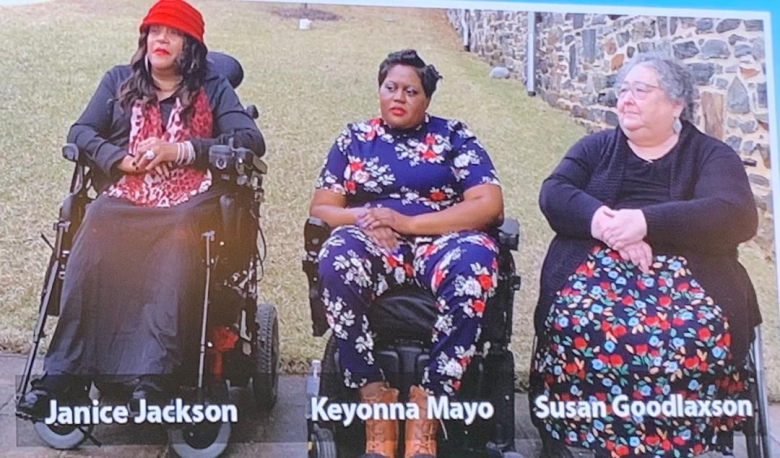The majority of Baltimore’s sidewalks and curb ramps are in disrepair due to vegetation overgrowth, decades of wear and tear, and narrow design. For people who use wheelchairs, scooters, and other mobility devices, these cracks and inaccessible paths become an incredible inconvenience and at times a life-threatening experience.
Janice Jackson, the executive director of disability peer counseling group Women Embracing Abilities Now, said the conditions of the sidewalks meant she would often have to ride in the street, leaving her vulnerable to large vehicles and triggering PTSD from previously being hit by a car in Prince George’s County.
“Those lived experiences gave me that fight in me to fight this lawsuit out until we got a resolution, until the city was ready to come into compliance and really work with us,” Jackson said.
On November 20, Baltimore’s Board of Estimates approved a $44 million settlement to resolve that lawsuit, Susan Goodlaxson, et al. vs. Mayor and City Council of Baltimore, that will be put towards upgrading sidewalks and curb ramps right-of-ways, thus beginning an initiative that will make the city more accessible and compliant with the American with Disabilities Act.
Over the next four years and beyond, the city’s Department of Transportation will appoint an ADA coordinator, create a pedestrian inspection program and maintenance program that will clear sidewalk clutter and vegetation, and a public education campaign on the importance of accessibility, according to the Board of Estimates agenda docket.
This settlement happened as a result of a class action lawsuit filed in 2021 by plaintiffs Jackson, Susan Goodlaxson, Keyonna Mayo — all of whom use wheelchairs — the IMAGE Center for People with Disabilities, and Disability Rights Maryland, after a BCDOT study showed that only 1.3% of over 37,000 surveyed curb ramps complied with the ADA. DRM asked the three women to join the suit due to their lived experience of using a wheelchair in an inaccessible city.
Teara Winmond, the executive director for the IMAGE Center, says that this monumental achievement by the three women could set the standard for accessibility in other cities across the country.
“This is the city taking a partnership to not only improve, but sustain those improvements. There will be check-ins, there will be quality measures, there will be accountability,” Winmond said. “This isn’t just a one time deal.”
Jackson, who was ecstatic when she heard the news of the settlement, says that this victory extends beyond the disability community.
“You have those who are [temporarily] disabled, or you have pregnant women, or you have the elderly. It’s not safe for anyone that’s walking the streets in Baltimore, so I believe it’s just a win-win for everyone,” Jackson said.
In the first fiscal year of this settlement, Mayor Brandon Scott and the City of Baltimore have committed towards spending $8 million out of the $44 million toward installing at least 533 curb ramps between July 2024 and June 2025. The money will come from state Highway User Revenue, and any more than expected money from the fund will be put toward funding the installation and repair of existing pedestrian right of ways.
In subsequent fiscal years, an annual commitment of $12 million will be spent. However, once the contract expires in June, 2028, all respective parties involved in the settlement will renegotiate the spending contract. This is due to the project realistically taking over 10 years, and according to Deputy Solicitor Stephen Salsbury, “projecting out 20 years from now [what] the city’s financial situation is gonna be, how much a curb ramp is gonna cost, all those things are very difficult to project.”
Therefore, the four-year period between now and 2028 will also serve as a baseline to see what works and what can be improved upon towards fixing the city’s aging sidewalks and curb ramps. Gabriel Rubinstein, the managing attorney for DRM and one of the lawyers for the plaintiffs, believes that the city, the disability community and the public at large will want this project to continue beyond four years.
“I’m hopeful that just seeing the benefits of having an accessible city in the next four years will keep the [public] … wanting to start to engage in the process,” Rubinstein said.
“We’re not going anywhere,” Jackson said. “These are the necessities that we need to live full productive lives as individuals with disabilities. So we’re in it.”
Correction: This story was updated to clarify that Janice Jackson was hit by a car in Prince George’s County, not Baltimore City.

